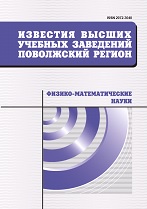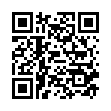|
Physics
A study of the electronic structure of single-walled zigzag nanotubes
A. V. Zakharova, G. I. Mironovb
a Republican Oncological Clinic, Yoshkar-Ola
b Mari State University, Yoshkar-Ola
Abstract:
Background. The purpose of this paper is to investigate the density of an electron state with a gradual increase in the length of a nanotube. To do this, we select a carbon atom in the center of a small-sized nanotube, calculate the energy spectrum of the electron located on this nanotube node, and the electron density in arbitrary units. Then we will gradually increase symmetrically relative to the chosen atom of the nanotube and trace how the energy spectrum and density of the electronic state will change in this case. Materials and methods. From a real nanotube to the possibility of a mathematical description within the framework of quantum field theory, let us pass to the nanotube model by using the fact that sp$^{2}$ hybridization in the case of a nanotube will be dominated by pi-electrons. In this case, the wave functions of neighboring carbon atoms in nanotubes overlap, so the pi-electrons can jump from one nanotube node to the neighboring node. If, on this neighboring site, there was already an electron with the spin orientation of the electron in the direction opposite to the projection of the spin of the jumped p-electron, it becomes necessary to take into account the Coulomb repulsion of these two electrons with different spin projections at one site. To solve such problems, the Hubbard model is used. Results. The anticommutator Green's function was calculated, the energy spectrum from a nanotube with 36 atoms to a nanotube containing 468 atoms was constructed and analyzed. It is shown how the width of the “forbidden” zone varies with the increase in the number of carbon atoms in the nanotube. It also shows how the width of the upper and lower Hubbard subbands varies with the number of atoms in the nanotube. The density of the electron state for finite and infinite nanotubes of chirality is calculated (9,0). Conclusions. Analysis of electron state densities has shown that an infinite nanotube within the k -representation has the same parameters as the final one, consisting of 468 atoms for an atom in the center of the nanotube. It can be concluded that the atom in the center of the nanotube in the case of 468 atoms and more will experience the same effect from neighboring atoms as the atom carbon for a nanotube of infinite size.
Keywords:
nanotube, chirality, Fourier transform of the Green's function, spectrum of elementary excitations, electron density.
Citation:
A. V. Zakharov, G. I. Mironov, “A study of the electronic structure of single-walled zigzag nanotubes”, University proceedings. Volga region. Physical and mathematical sciences, 2018, no. 2, 106–118
Linking options:
https://www.mathnet.ru/eng/ivpnz162 https://www.mathnet.ru/eng/ivpnz/y2018/i2/p106
|

| Statistics & downloads: |
| Abstract page: | 20 | | Full-text PDF : | 2 | | References: | 7 |
|




 Contact us:
Contact us: Terms of Use
Terms of Use
 Registration to the website
Registration to the website Logotypes
Logotypes







 Citation in format
Citation in format 